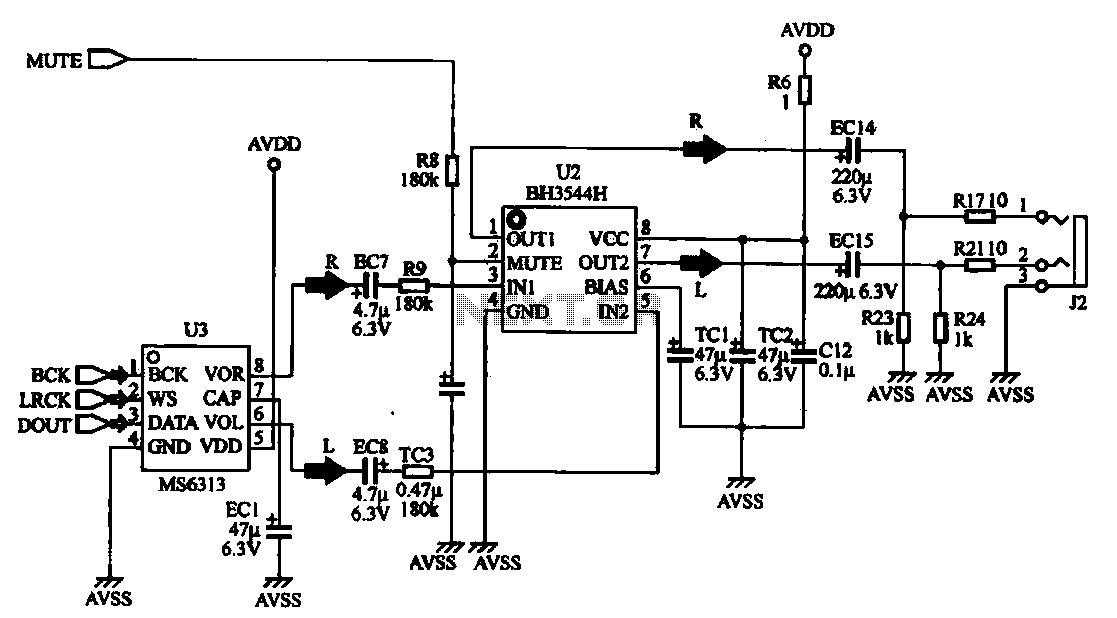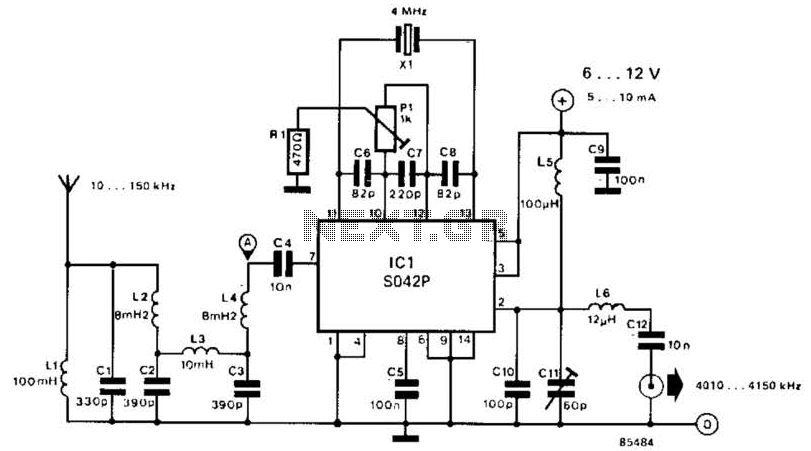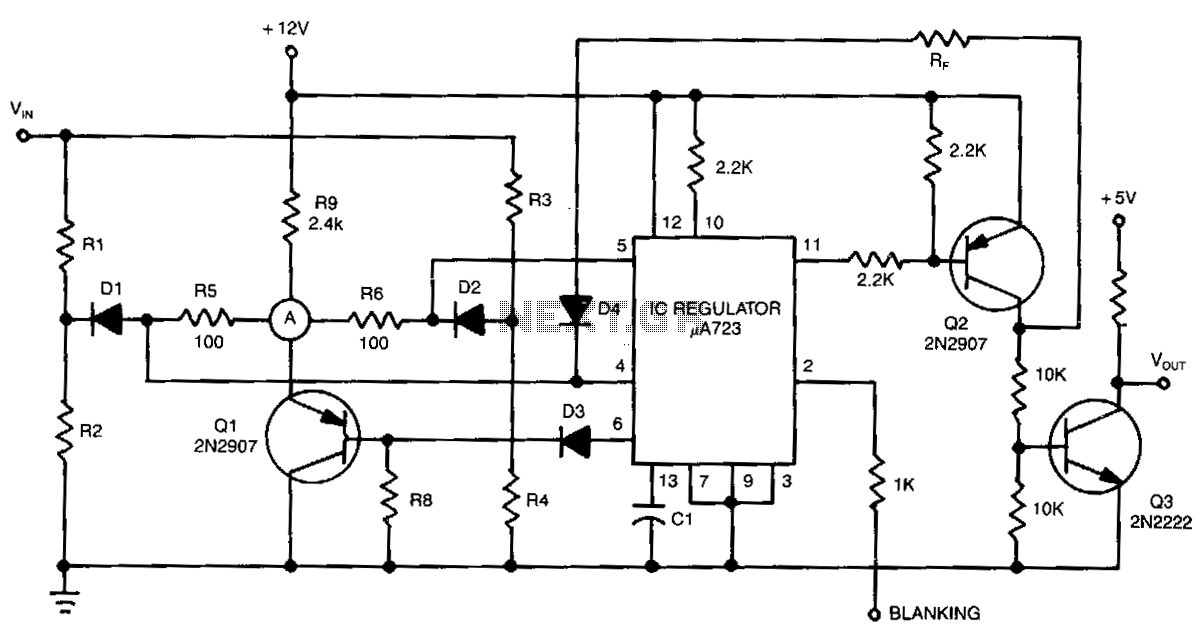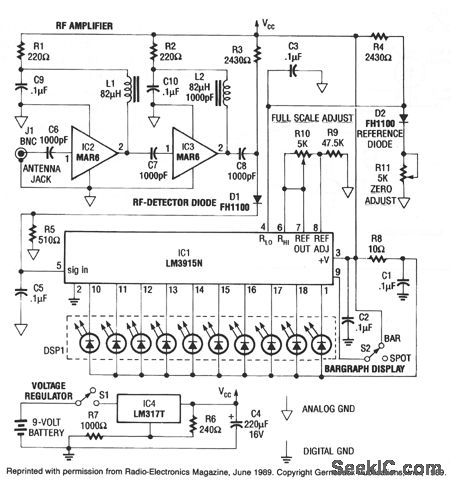
cto frequency converter
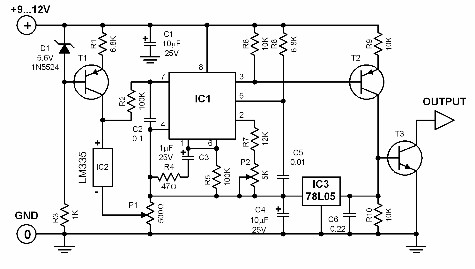
In certain temperature measurement applications, converting the measured value into a frequency rather than a voltage offers distinct advantages. A temperature-to-frequency converter can be directly interfaced with a frequency counter or connected to a computer without necessitating an A/D interface for displaying the measured value. The circuit described here has a conversion factor of 10 Hz per degree Celsius, with a measurable range spanning from 5 to 100 °C and a maximum error of ±0.3 °C. The LM335 integrated circuit is utilized as the temperature sensor. At zero degrees Celsius, the LM335 outputs a voltage of precisely 2.73 volts. The output signal is generated in the form of a square wave.
Calibration involves immersing the temperature sensor in a glass of crushed ice and water, allowing the sensor to stabilize for a few minutes. A voltmeter is then used to measure the voltage between the positive (+) pin of the LM335 and pin 2 of the LM331. The potentiometer P1 is adjusted to achieve an output voltage of 2.73V. Following this initial calibration, a glass of water is heated to 50 °C (measured with a standard thermometer). The sensor is placed in the warm water, and potentiometer P2 is adjusted to produce the desired frequency that corresponds to this temperature. For instance, P2 is set to generate a frequency of 50 Hz, which represents a temperature of 50 °C.
The temperature-to-frequency conversion circuit primarily comprises the LM335 temperature sensor and the LM331 voltage-to-frequency converter. The LM335 operates by providing a voltage output proportional to the temperature, while the LM331 translates this voltage into a frequency output. The relationship between temperature and frequency output is linear, ensuring that for every degree Celsius change, the frequency output changes by 10 Hz.
The calibration process is critical to ensure accuracy. The initial calibration at 0 °C establishes a reference point, allowing subsequent adjustments to be made when measuring higher temperatures. The use of a standard thermometer for verification during the calibration process enhances reliability.
The output square wave signal can be easily interfaced with digital frequency counters or microcontrollers, facilitating straightforward temperature monitoring and data logging applications. The design is beneficial for environments where direct voltage measurements may be less practical or where frequency signals are preferred for further processing or automation tasks.
Overall, this temperature-to-frequency conversion circuit presents a reliable and efficient method for temperature measurement, leveraging the simplicity of frequency counting while maintaining high accuracy within the specified range.In some cases of temperature measurements, it is more advantageous to convert the measured value into a frequency than into a voltage. A temperature to frequency converter can be directly connected to a frequency counter or it can be connected to a computer without using any A/D interface to display the measured value.
The conversion factor of the circuit featured here is 10 Hz per degree centigrade. The measurable range is from 5 to 100 °C with a maximum error of (plus/minus) 0. 3 °C. A single IC LM335 is used as the temperature sensor. When the temperature sensed by LM335 is zero, its output is exactly 2. 73 volts. The output signal comes out in the form of a squarewave. Calibration: Put crushed ice in a glass of water and place the temperature sensor in it. Let the sensor cool down for a few minutes. Using a voltmeter, measure the voltage level between the positive (+) pin of the temperature sensor (LM335) and pin 2 of the LM331. Afterwards, adjust P1 to output a voltage level of 2. 73V. After this initial calibration, heat a glass of water to 50 °C (use a normal thermometer to measure the temperature).
Connect the display device (e. g. frequency counter) to the circuit`s output. Place the sensor into the warm water, and adjust P2 to generate the desired frequency representing this temperature. For example: Adjust P2 so that the frequency is 50 Hz representing the temperature of 50 °C. 🔗 External reference
Calibration involves immersing the temperature sensor in a glass of crushed ice and water, allowing the sensor to stabilize for a few minutes. A voltmeter is then used to measure the voltage between the positive (+) pin of the LM335 and pin 2 of the LM331. The potentiometer P1 is adjusted to achieve an output voltage of 2.73V. Following this initial calibration, a glass of water is heated to 50 °C (measured with a standard thermometer). The sensor is placed in the warm water, and potentiometer P2 is adjusted to produce the desired frequency that corresponds to this temperature. For instance, P2 is set to generate a frequency of 50 Hz, which represents a temperature of 50 °C.
The temperature-to-frequency conversion circuit primarily comprises the LM335 temperature sensor and the LM331 voltage-to-frequency converter. The LM335 operates by providing a voltage output proportional to the temperature, while the LM331 translates this voltage into a frequency output. The relationship between temperature and frequency output is linear, ensuring that for every degree Celsius change, the frequency output changes by 10 Hz.
The calibration process is critical to ensure accuracy. The initial calibration at 0 °C establishes a reference point, allowing subsequent adjustments to be made when measuring higher temperatures. The use of a standard thermometer for verification during the calibration process enhances reliability.
The output square wave signal can be easily interfaced with digital frequency counters or microcontrollers, facilitating straightforward temperature monitoring and data logging applications. The design is beneficial for environments where direct voltage measurements may be less practical or where frequency signals are preferred for further processing or automation tasks.
Overall, this temperature-to-frequency conversion circuit presents a reliable and efficient method for temperature measurement, leveraging the simplicity of frequency counting while maintaining high accuracy within the specified range.In some cases of temperature measurements, it is more advantageous to convert the measured value into a frequency than into a voltage. A temperature to frequency converter can be directly connected to a frequency counter or it can be connected to a computer without using any A/D interface to display the measured value.
The conversion factor of the circuit featured here is 10 Hz per degree centigrade. The measurable range is from 5 to 100 °C with a maximum error of (plus/minus) 0. 3 °C. A single IC LM335 is used as the temperature sensor. When the temperature sensed by LM335 is zero, its output is exactly 2. 73 volts. The output signal comes out in the form of a squarewave. Calibration: Put crushed ice in a glass of water and place the temperature sensor in it. Let the sensor cool down for a few minutes. Using a voltmeter, measure the voltage level between the positive (+) pin of the temperature sensor (LM335) and pin 2 of the LM331. Afterwards, adjust P1 to output a voltage level of 2. 73V. After this initial calibration, heat a glass of water to 50 °C (use a normal thermometer to measure the temperature).
Connect the display device (e. g. frequency counter) to the circuit`s output. Place the sensor into the warm water, and adjust P2 to generate the desired frequency representing this temperature. For example: Adjust P2 so that the frequency is 50 Hz representing the temperature of 50 °C. 🔗 External reference
